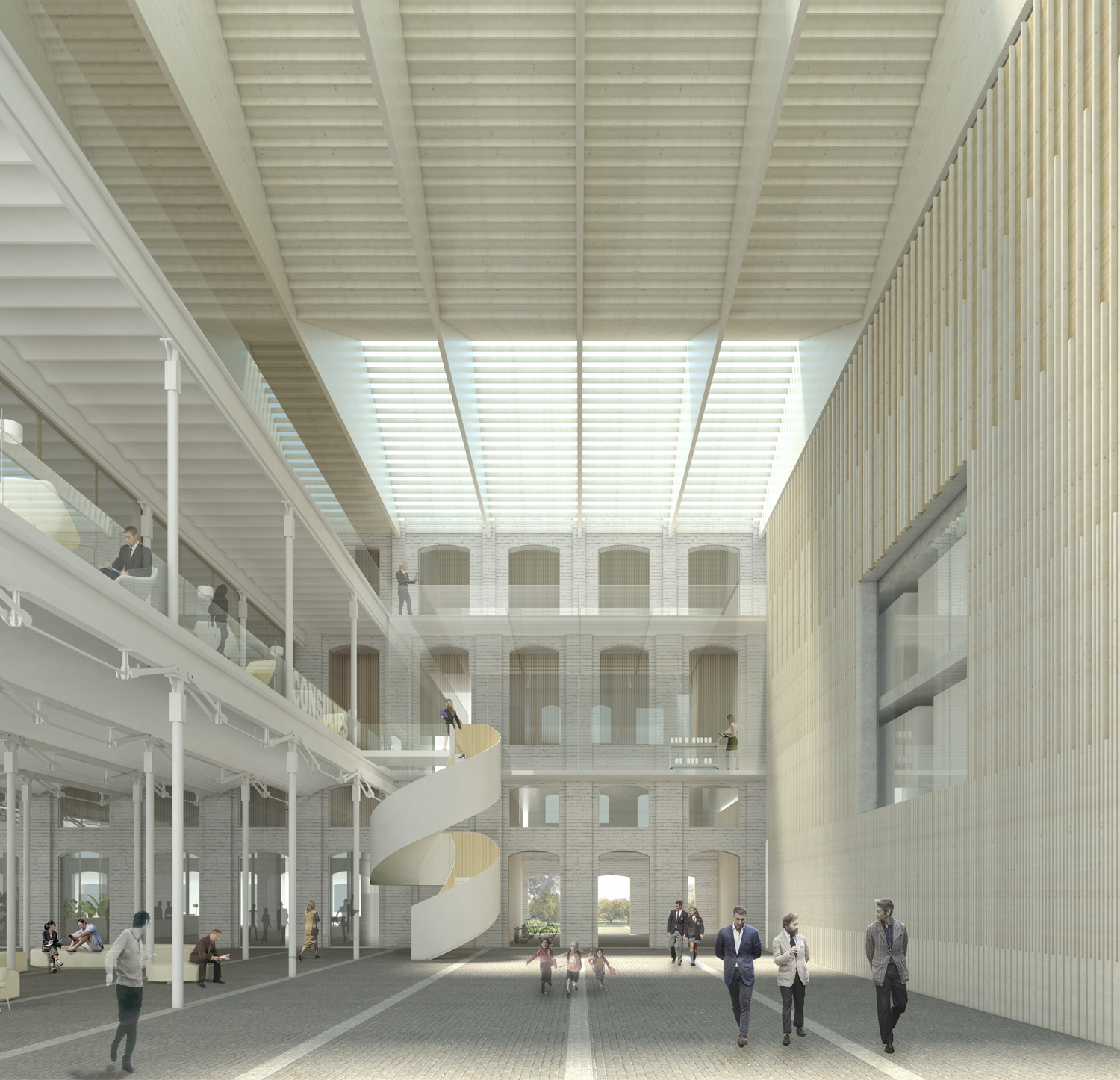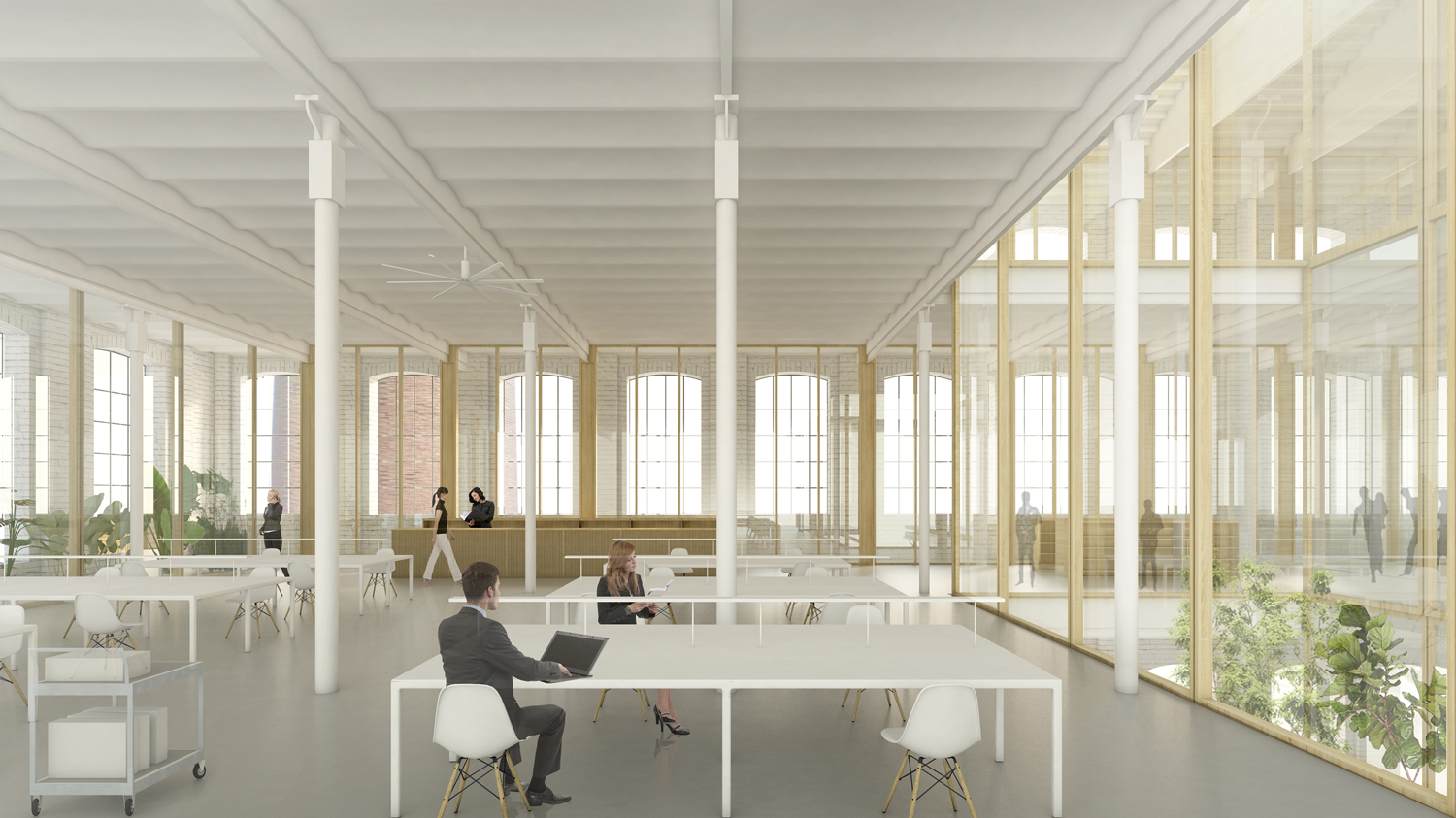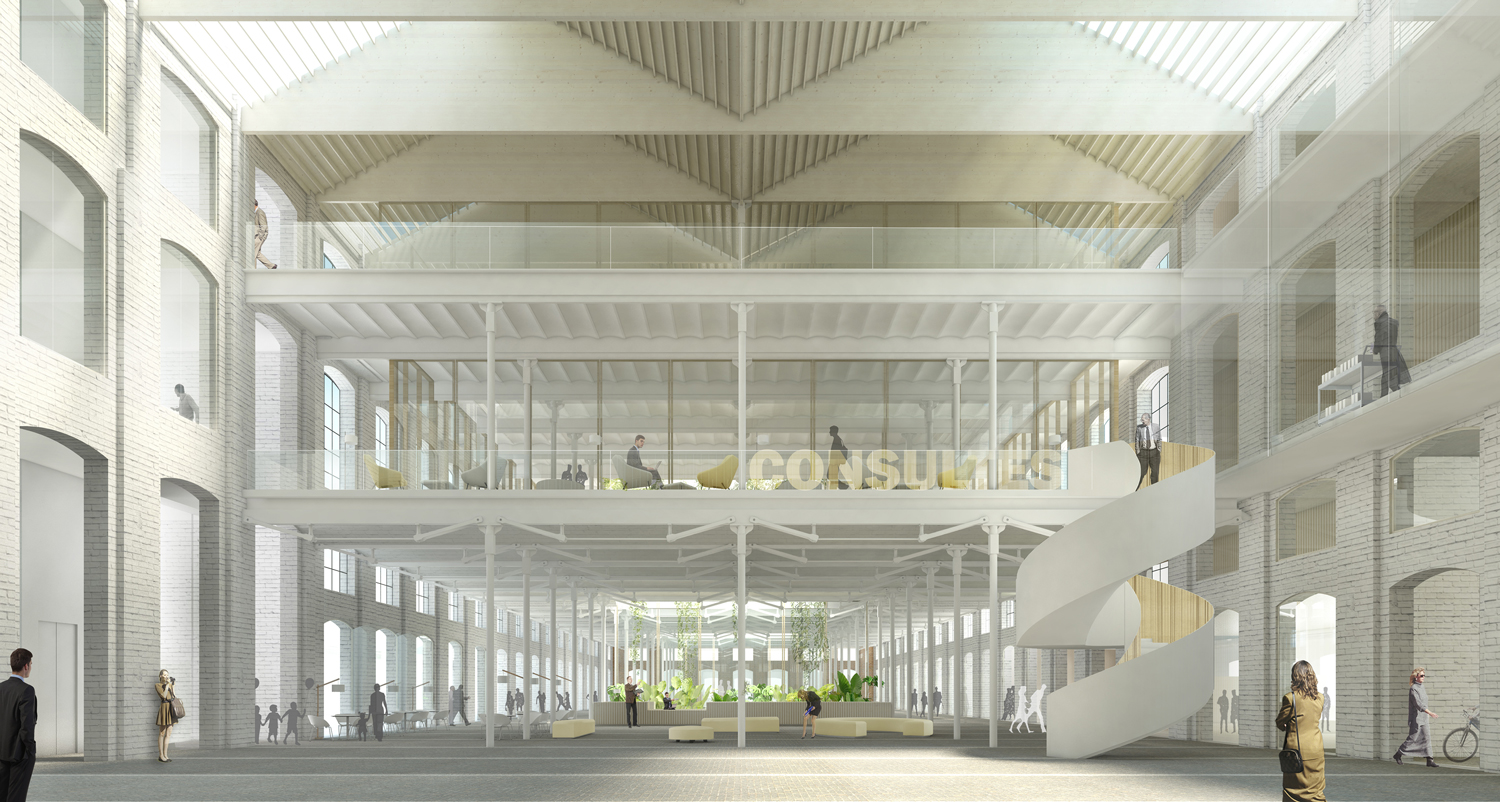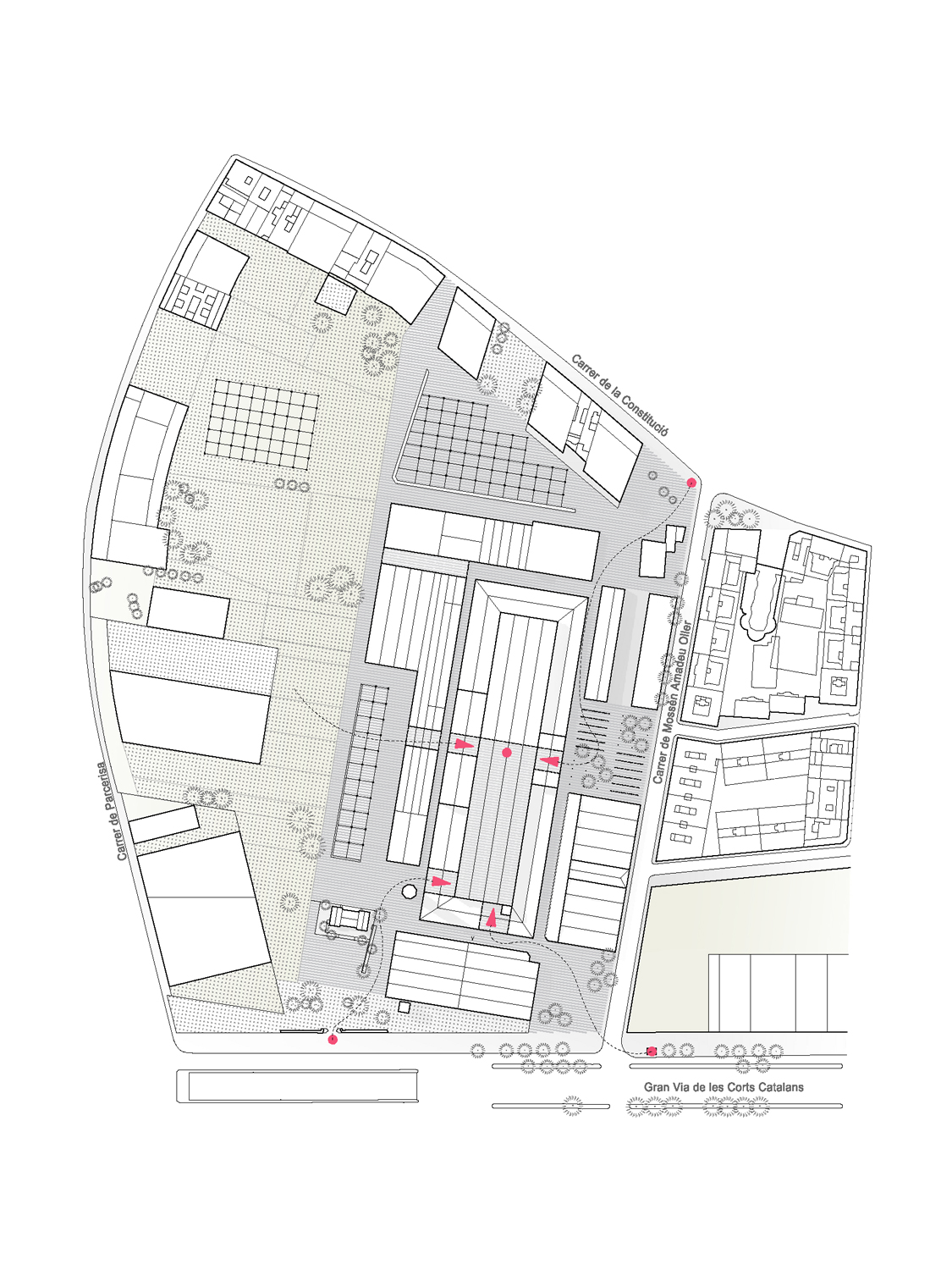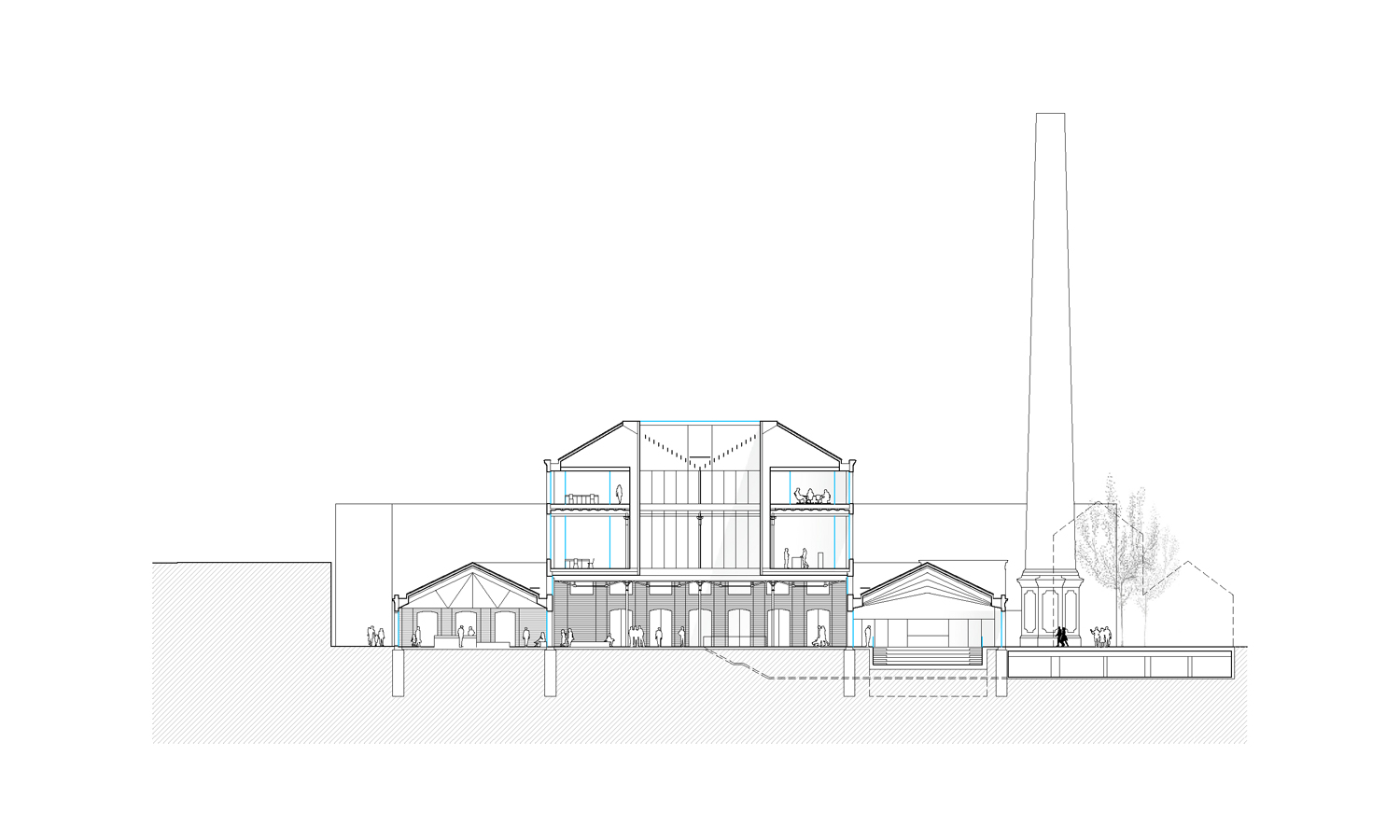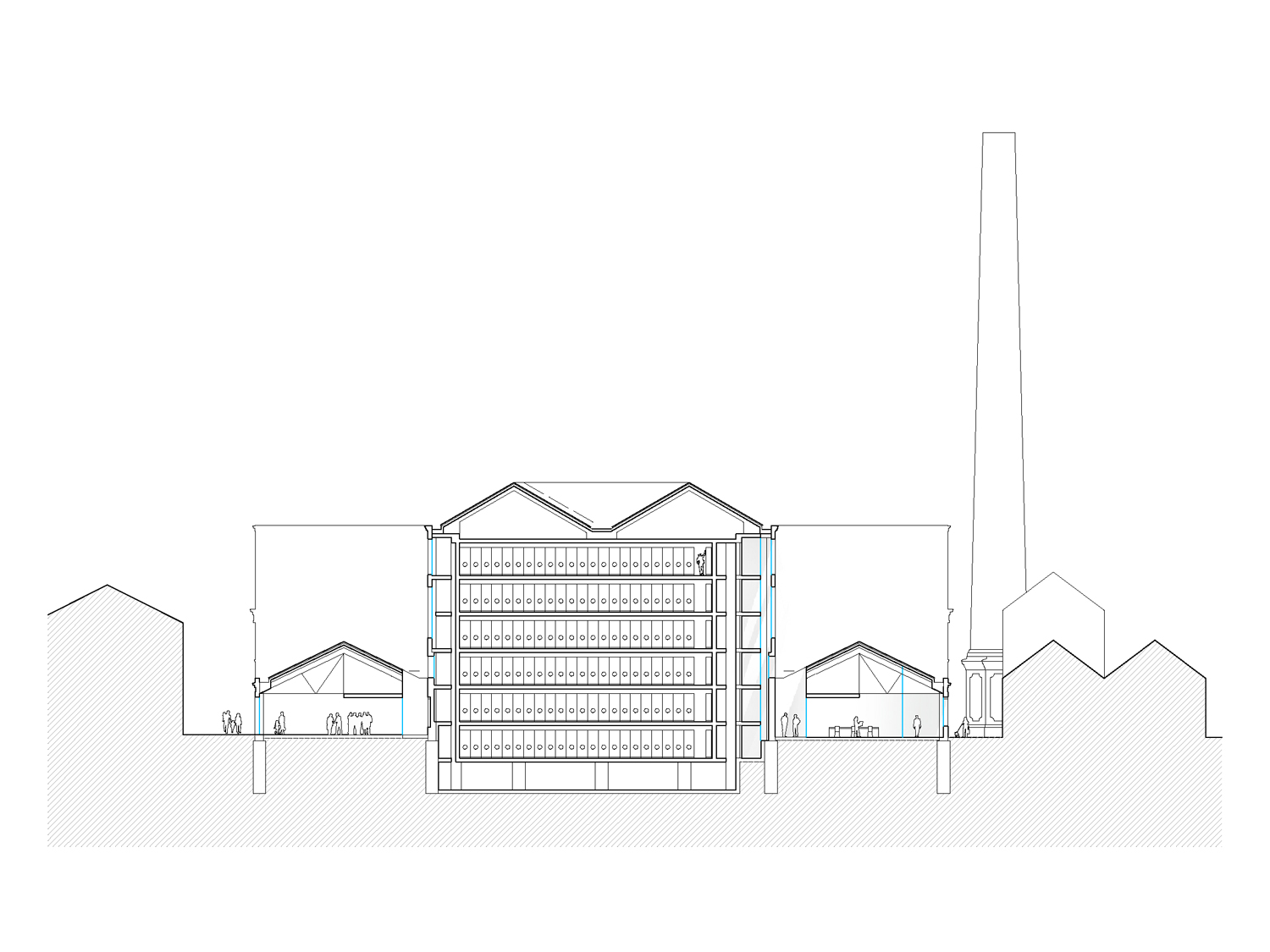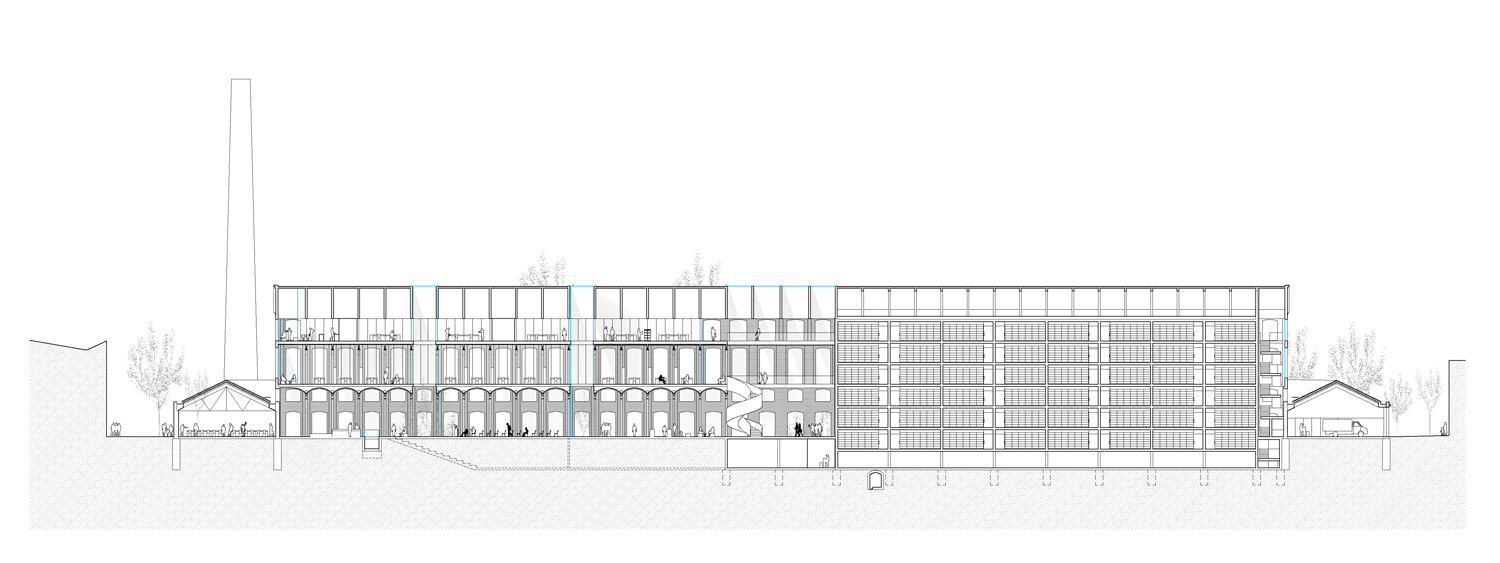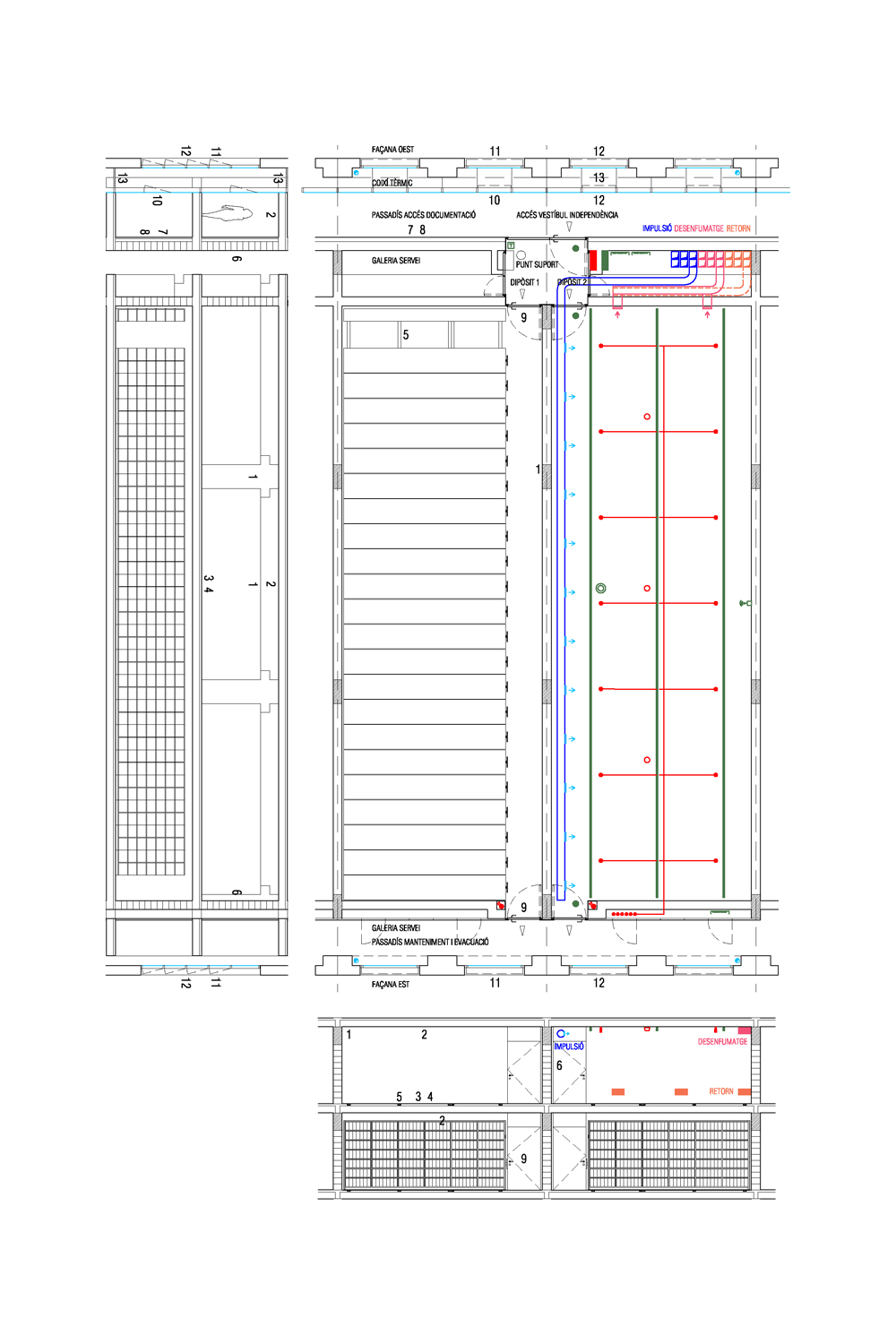☉ Rehabilitació de la nau 8 de Can Batlló is a winning proposal by OP Team Mendoza Partida and Ramon Valls for BIMSA in 2018. It is located in Barcelona Spain in an urban and industrial setting. Its scale is large with a surface of 25.000 sqm a budget of 47.000.000 € and a ratio of 1.880 €/sqm. Key materials are brick, metal and glass. Review the 2 proposals for the same competition.
The project organised by BIMSA for the rehabilitation of warehouse eight on the Can Batlló site as home to the City of Barcelona Archives. In addition to conserving and upgrading the building’s characteristic elements, the aim of the competition was to adapt it to house the over 50 kilometres of documentation, four million photographs, and thousands of graphic and cartographic documents that illustrate and document the history of Barcelona, currently kept in 21 different centres.
Entitled “Agora”, the project presents a building that is rooted in its surroundings, light-filled and open to the city’s people, apparently simple despite the organisational complexity of an archive, a building that places people at the centre of its design. It concentrates the area containing the repositories (50% of the brief) in the northern half of the central part of warehouse eight of Can Batlló, a two-volume space, 27 m wide, 135 m long with three six-m-high levels; and designs the southern half and the built ring around it, 14 m wide with one floor, for the more public areas of the brief.
This space for use by the public is further enhanced by the creation of three inner courtyards that provide daylight and natural ventilation, offer interesting lines of sight, and reveal the original structure of the building in all its magnitude. The main entrance to the archives is via the largest of these courtyards, which acts as an atrium and threshold to the public square, the agora, that occupies the ground floor. This square provides access to the complex’s various social and cultural spaces surrounding the central building (galleries, auditorium, seminar rooms), and the first and second floors are given over to areas for consultations and in-house work. The agora is permeable, allowing multiple alternative approaches, connecting and accompanying the routes that link Gran Via with the neighbourhood of La Bordeta, and the new amenities with the new park at Can Batlló.
The project recovers the façades and inside space, and the slope of the roof is restored, highlighting the volume and the sheer spaciousness of the original building. The archive repositories are housed in a structure built by adding together 48 independent cells to facilitate the environmental conditions required by each type of document. This structure is, in turn, separated from the existing construction by buffer spaces to minimise the need for external energy. With the aim of self-sufficiency, the project incorporates renewable options such as geothermic and solar photovoltaic energies.
